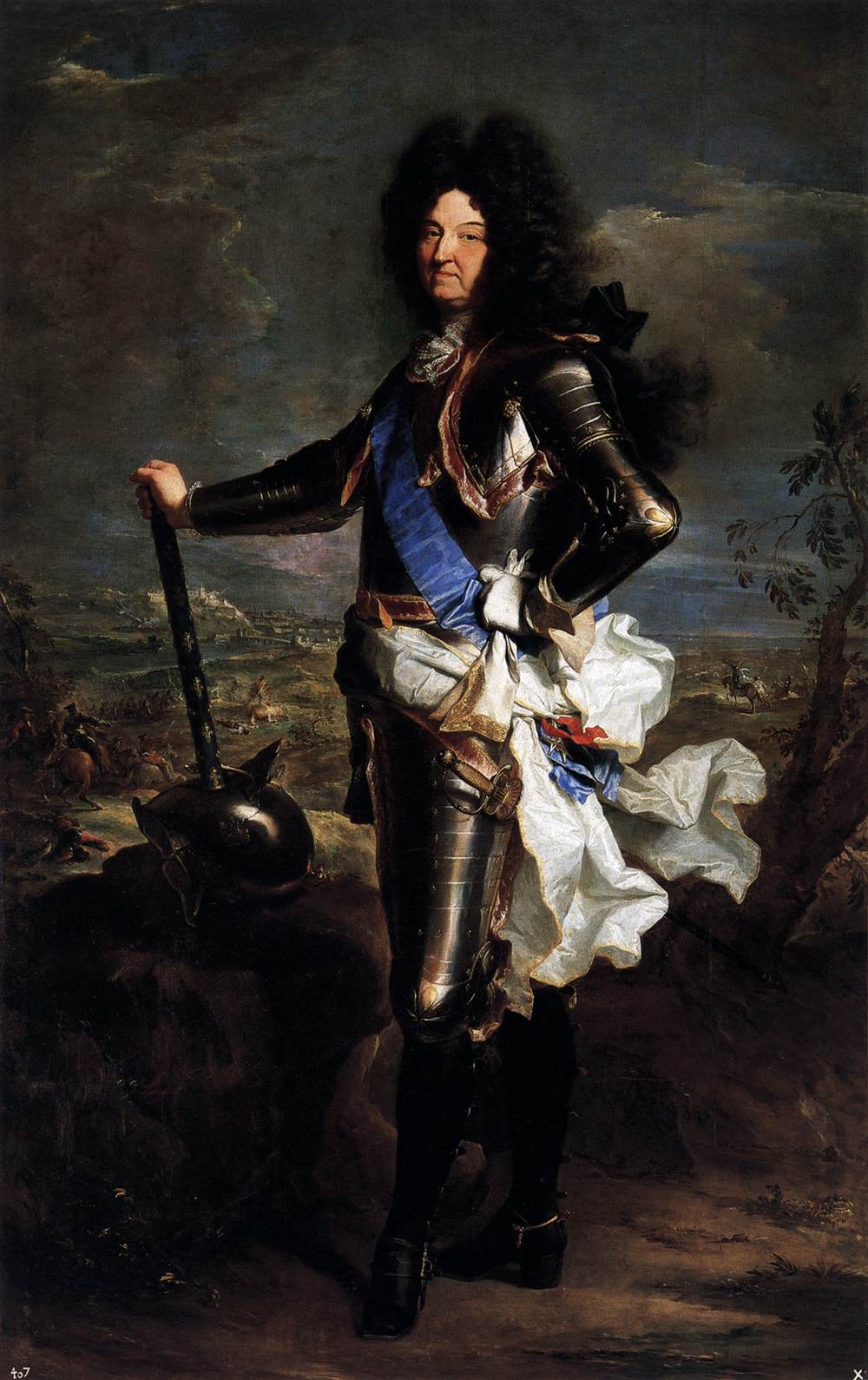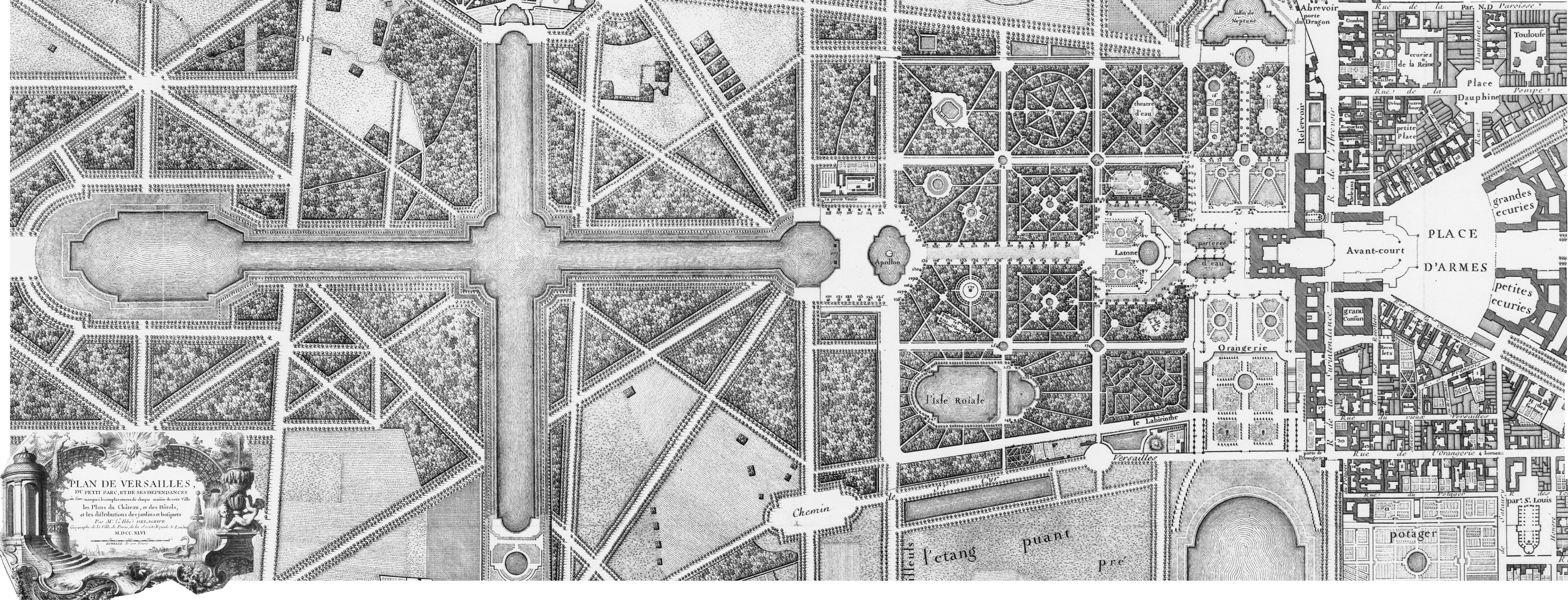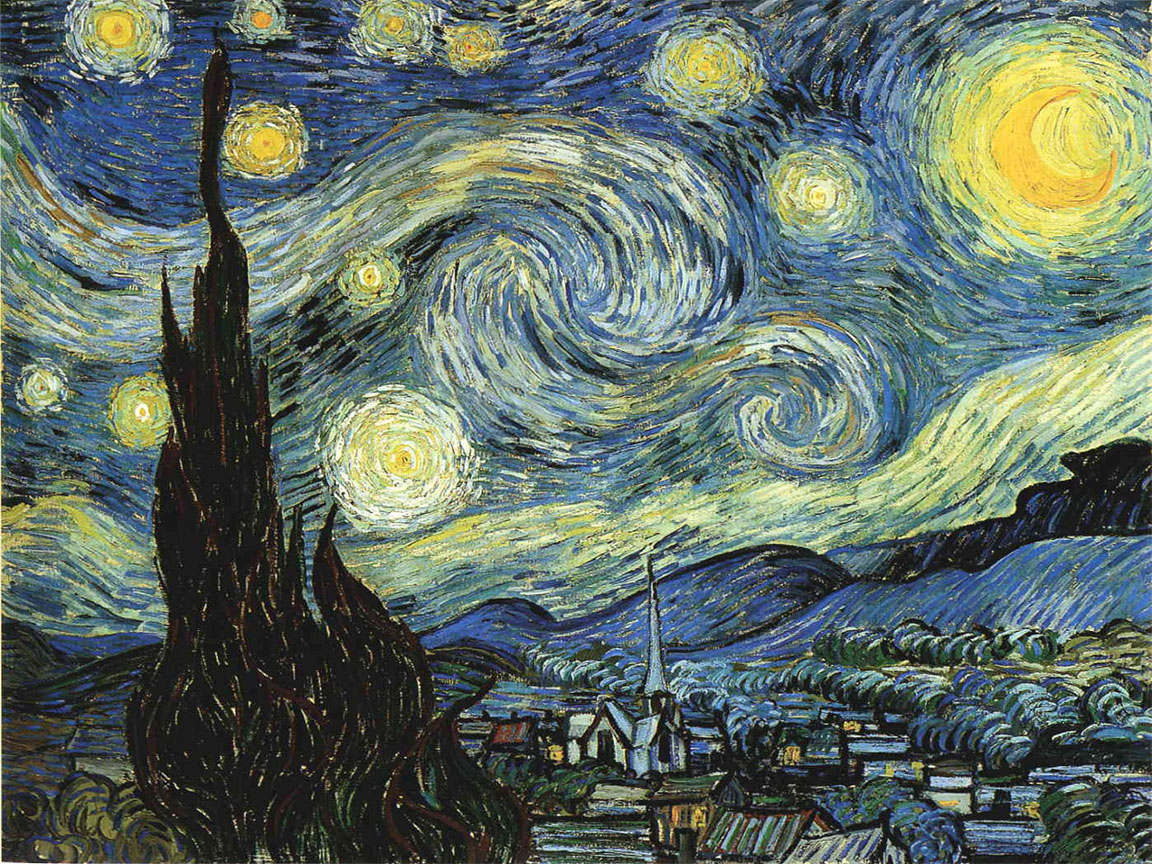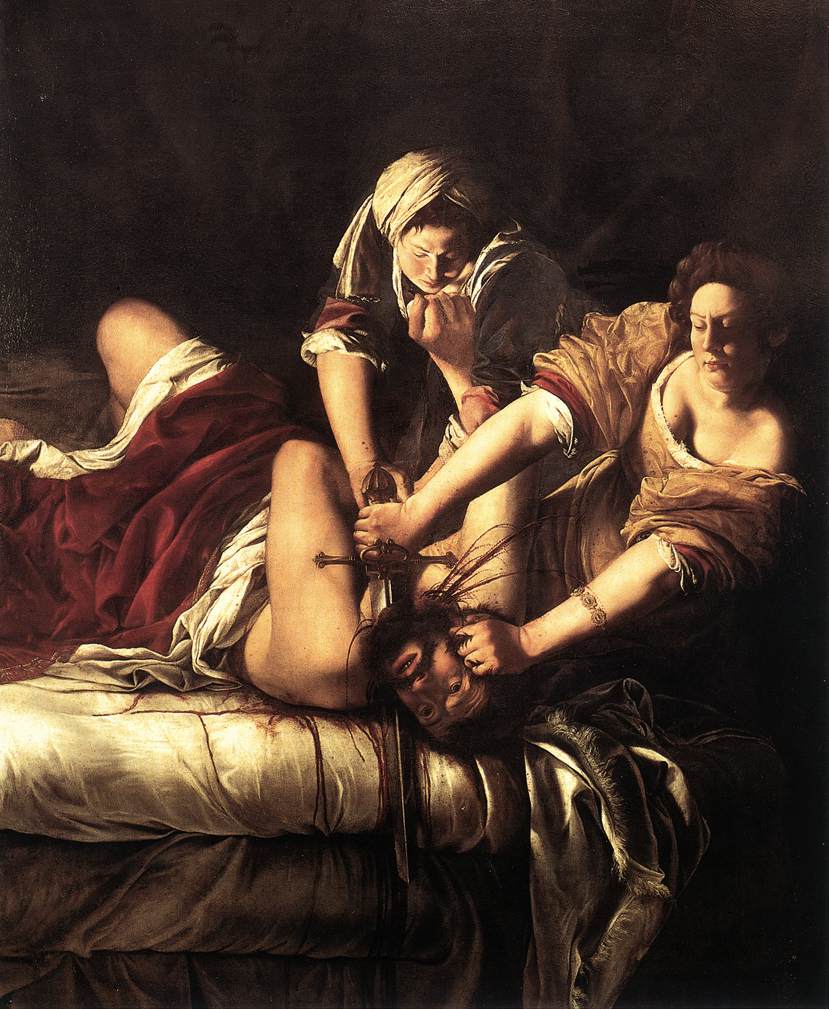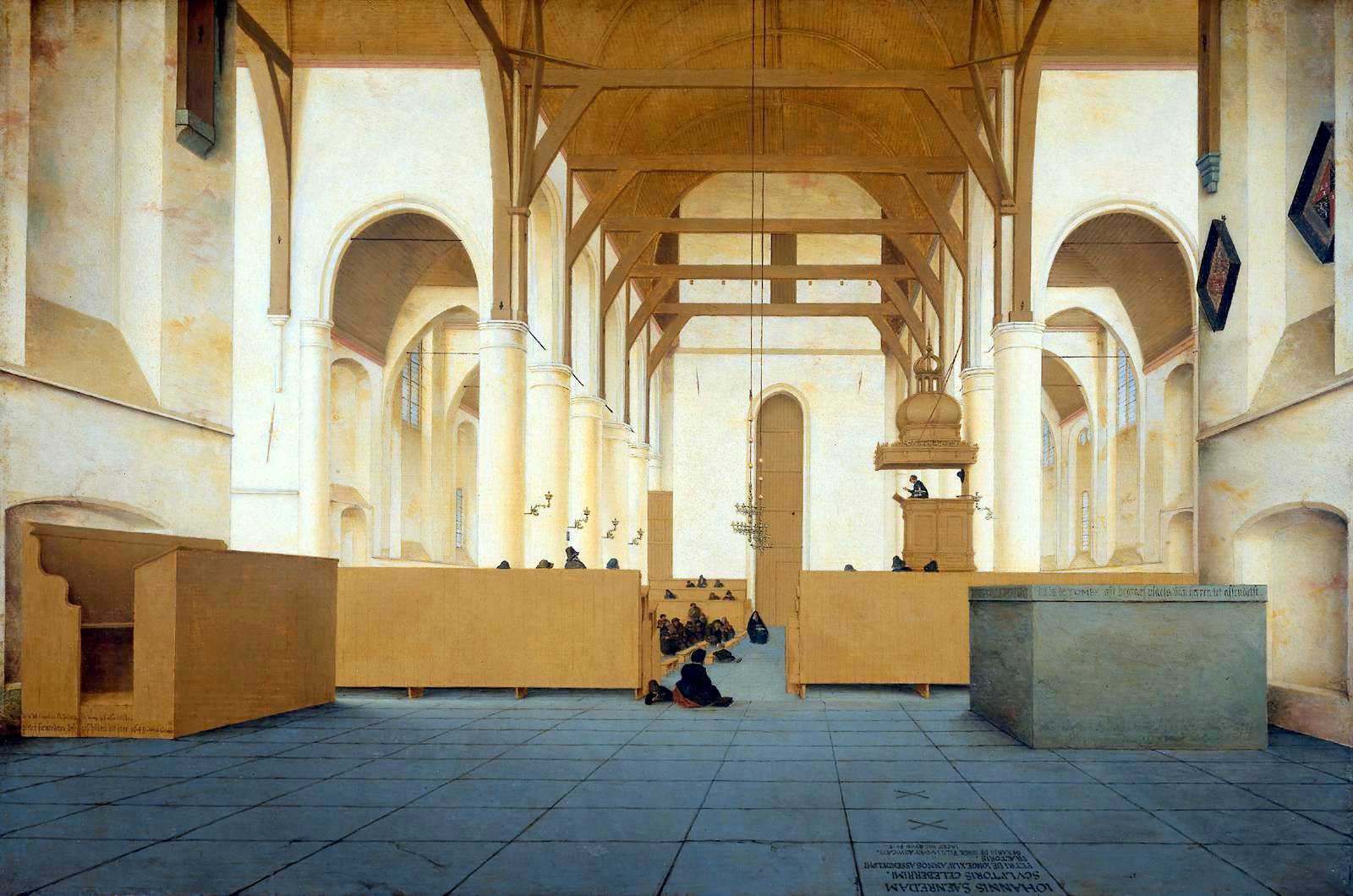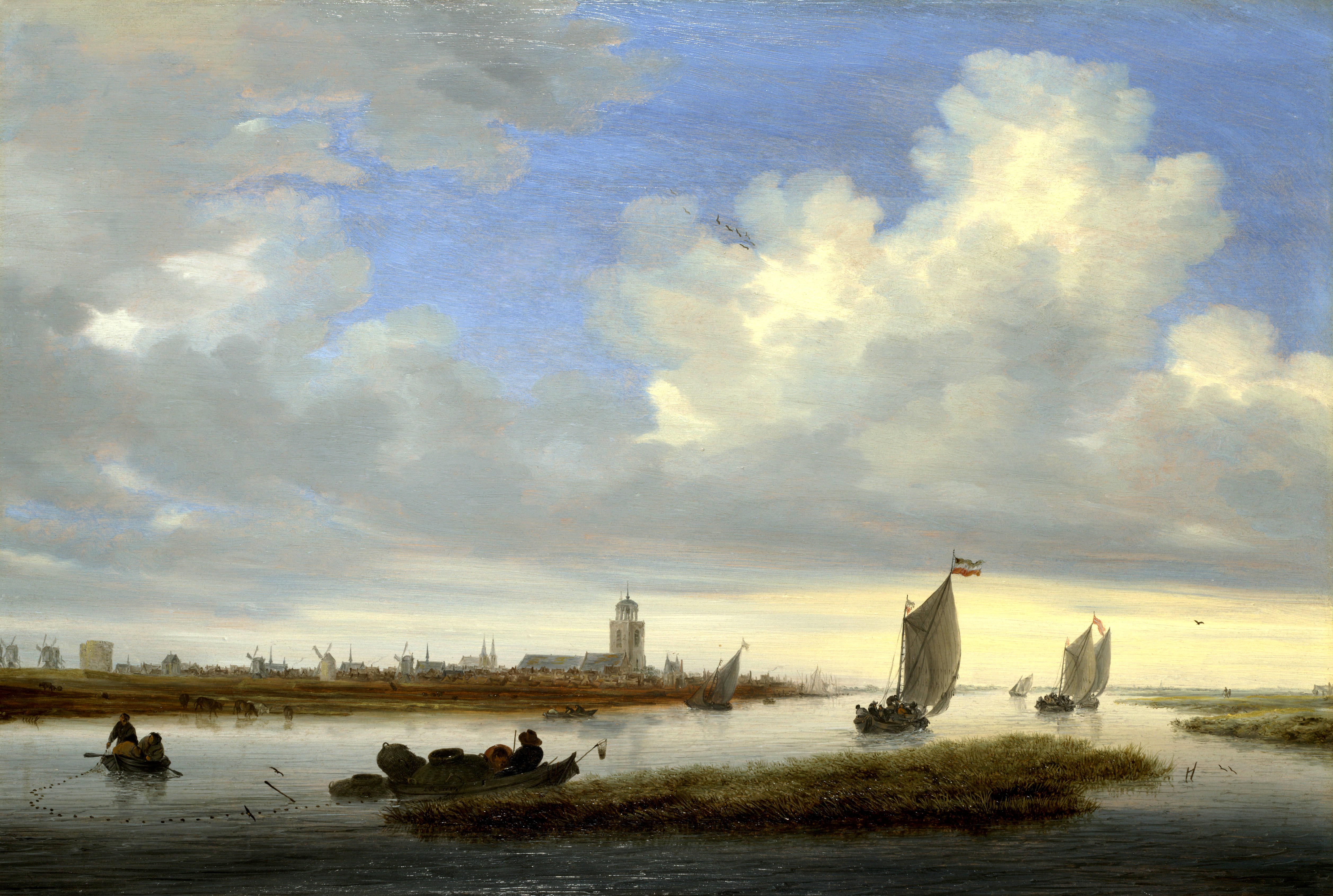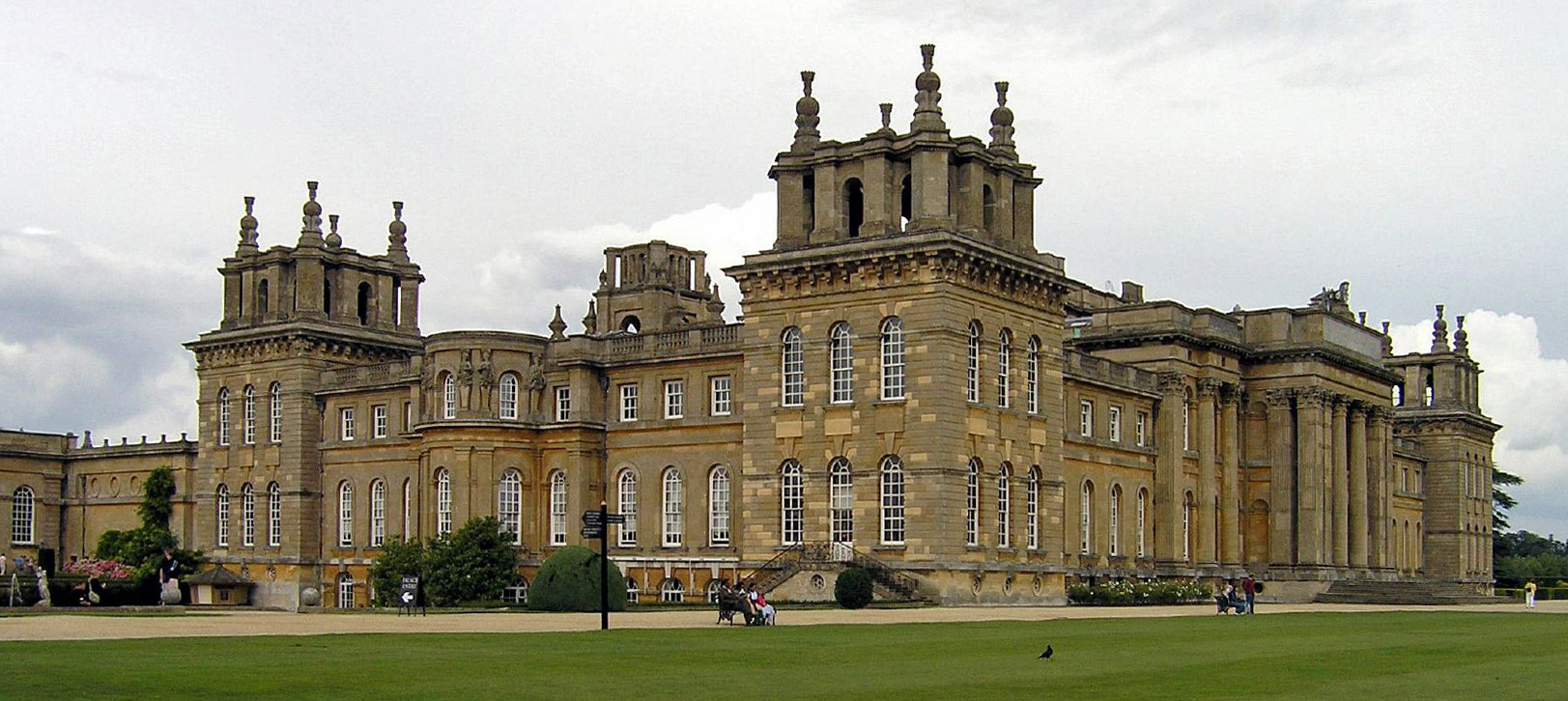Alas, Poussin.
(Poussin/The Shepherds of Arcadia/1638)
Poussin exemplifies the classical harmony of the French Baroque. In temperament, the Poussiniste taste was mild, even, predictable and calm. The figures are at rest-- compare this to the flamboyant dance movements of Rubens. Ruben's colors burn with passion, Poussin's are cool and subtle. (Can you see a connection between Poussin's aesthetic with the French garden?)
Poussin, French born, spent most of his life in Rome where he studied the work of Raphael. It is Raphael's influence that turned Poussin into a Classical painter. This means that Poussin's subject matter was taken from classical mythology or Christian heritage, not the secular or pedestrian. What governed Poussin's work was decorum and restraint. In The Shepherds of Arcadia, the shepherds trace the
inscription on the tomb: "I too once dwelled in Arcadia", a reminder of mortality and that we all too will die. The woman draped in gold to the right of the men is the Muse of History, affirming the inscription.
Notice the musculature of the figures, understated in comparison to Rubens as well as the understated colors-- the strong geometry: horizontals and verticals-- the even composition of he figures, arranged in a cube. Granted, the farmers are idealized, which is to be expected at the time. Prior to the 17th century, the Renaissance laid the aesthetic for the exagerrated human form. Somply, that was just the way the body was portrayed. But in comparison to the rippling backs and dynamic energy of Rubens, Poussin seems tame.
Of course, this is not to say that Poussin's paintings were never dynamic, never included motion. That is not the case. But the emphasis in Poussin's work is symmetry, balance and restraint anchored in the intellect, not the senses like Rubens. For Rubenistes, color was paramount to painting and for the Poussiniste, drawing. In a sense, Ruben's represented the Baroque expression while Poussin represented the Classical Baroque.
 Remember that the 17th century marks the rise of Absolutism in France. Louis XIV erected Versailles, the most magnificent royal residence in the world, where he moved his court and government officials. Here, the Louis XIV's centralized monarchy exerted its royal power over its dominions on the ground of divine right. This divine rule has a long history, going back to the Middle Ages when popes crowned European kings and further to the man/god kings of ancient Egypt and Mesopotamia. Louis XIV used art to grandeurize himself, to glorify his rule. In England, the monarchy struggled against Puritan factions that denied absolutism. The Protestant Reformation had been spurring itself since Martin Luther and would soon bring about major changes in the Western landscape. The subject of the next post will be the promulgation of Protestantism in the West.
Remember that the 17th century marks the rise of Absolutism in France. Louis XIV erected Versailles, the most magnificent royal residence in the world, where he moved his court and government officials. Here, the Louis XIV's centralized monarchy exerted its royal power over its dominions on the ground of divine right. This divine rule has a long history, going back to the Middle Ages when popes crowned European kings and further to the man/god kings of ancient Egypt and Mesopotamia. Louis XIV used art to grandeurize himself, to glorify his rule. In England, the monarchy struggled against Puritan factions that denied absolutism. The Protestant Reformation had been spurring itself since Martin Luther and would soon bring about major changes in the Western landscape. The subject of the next post will be the promulgation of Protestantism in the West.
Poussin, French born, spent most of his life in Rome where he studied the work of Raphael. It is Raphael's influence that turned Poussin into a Classical painter. This means that Poussin's subject matter was taken from classical mythology or Christian heritage, not the secular or pedestrian. What governed Poussin's work was decorum and restraint. In The Shepherds of Arcadia, the shepherds trace the
inscription on the tomb: "I too once dwelled in Arcadia", a reminder of mortality and that we all too will die. The woman draped in gold to the right of the men is the Muse of History, affirming the inscription.
Notice the musculature of the figures, understated in comparison to Rubens as well as the understated colors-- the strong geometry: horizontals and verticals-- the even composition of he figures, arranged in a cube. Granted, the farmers are idealized, which is to be expected at the time. Prior to the 17th century, the Renaissance laid the aesthetic for the exagerrated human form. Somply, that was just the way the body was portrayed. But in comparison to the rippling backs and dynamic energy of Rubens, Poussin seems tame.
Of course, this is not to say that Poussin's paintings were never dynamic, never included motion. That is not the case. But the emphasis in Poussin's work is symmetry, balance and restraint anchored in the intellect, not the senses like Rubens. For Rubenistes, color was paramount to painting and for the Poussiniste, drawing. In a sense, Ruben's represented the Baroque expression while Poussin represented the Classical Baroque.
 Remember that the 17th century marks the rise of Absolutism in France. Louis XIV erected Versailles, the most magnificent royal residence in the world, where he moved his court and government officials. Here, the Louis XIV's centralized monarchy exerted its royal power over its dominions on the ground of divine right. This divine rule has a long history, going back to the Middle Ages when popes crowned European kings and further to the man/god kings of ancient Egypt and Mesopotamia. Louis XIV used art to grandeurize himself, to glorify his rule. In England, the monarchy struggled against Puritan factions that denied absolutism. The Protestant Reformation had been spurring itself since Martin Luther and would soon bring about major changes in the Western landscape. The subject of the next post will be the promulgation of Protestantism in the West.
Remember that the 17th century marks the rise of Absolutism in France. Louis XIV erected Versailles, the most magnificent royal residence in the world, where he moved his court and government officials. Here, the Louis XIV's centralized monarchy exerted its royal power over its dominions on the ground of divine right. This divine rule has a long history, going back to the Middle Ages when popes crowned European kings and further to the man/god kings of ancient Egypt and Mesopotamia. Louis XIV used art to grandeurize himself, to glorify his rule. In England, the monarchy struggled against Puritan factions that denied absolutism. The Protestant Reformation had been spurring itself since Martin Luther and would soon bring about major changes in the Western landscape. The subject of the next post will be the promulgation of Protestantism in the West. Stay tuned.



